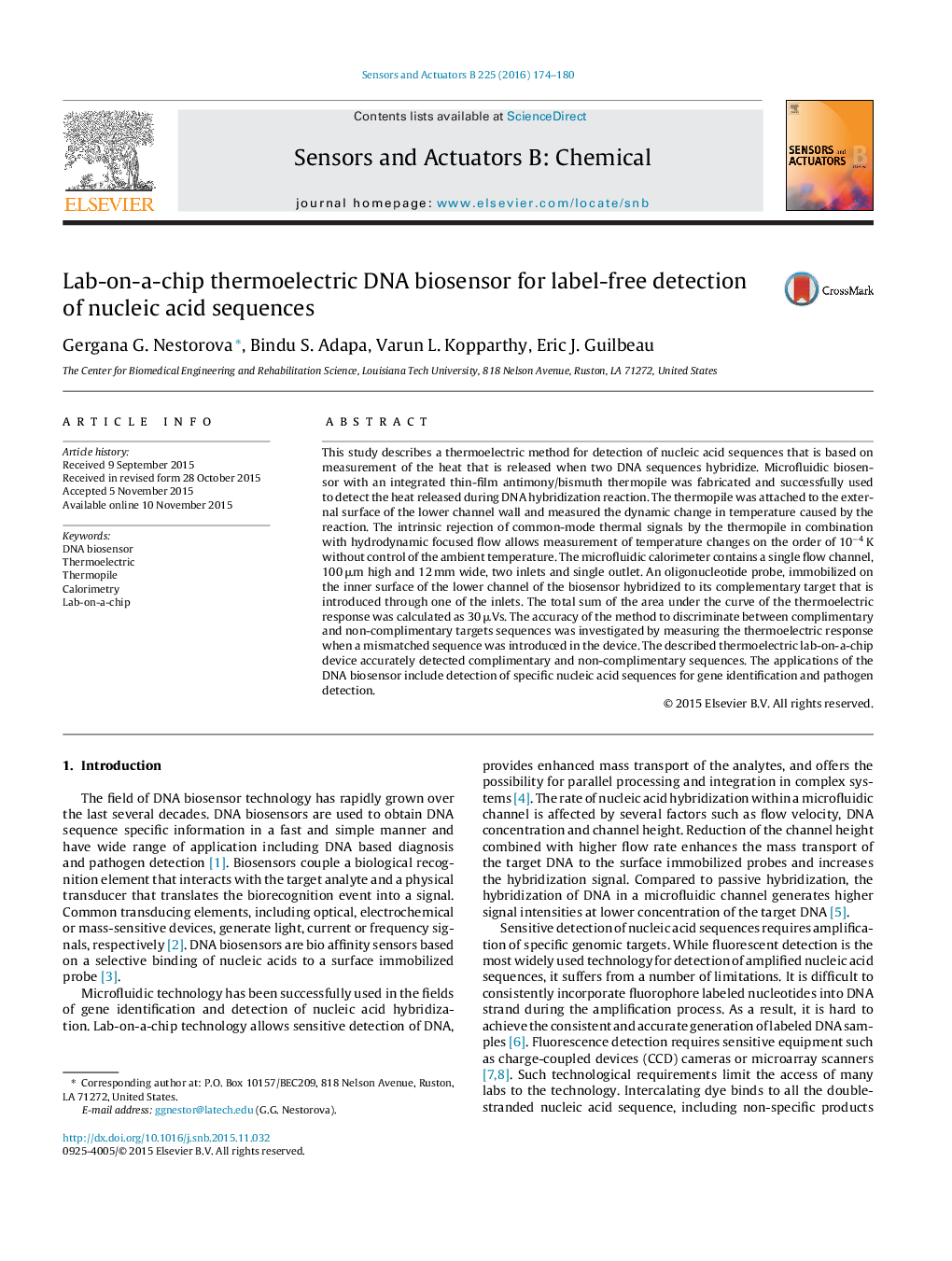| کد مقاله | کد نشریه | سال انتشار | مقاله انگلیسی | نسخه تمام متن |
|---|---|---|---|---|
| 744189 | 1644971 | 2016 | 7 صفحه PDF | دانلود رایگان |

• We developed a thermoelectric biosensor for detection of specific nucleic acid sequences.
• The heat released during DNA hybridization reaction was successfully measured using the microfluidic calorimeter.
• The thermoelectric biosensor offers label-free and direct method for detection of nucleic acid sequences.
This study describes a thermoelectric method for detection of nucleic acid sequences that is based on measurement of the heat that is released when two DNA sequences hybridize. Microfluidic biosensor with an integrated thin-film antimony/bismuth thermopile was fabricated and successfully used to detect the heat released during DNA hybridization reaction. The thermopile was attached to the external surface of the lower channel wall and measured the dynamic change in temperature caused by the reaction. The intrinsic rejection of common-mode thermal signals by the thermopile in combination with hydrodynamic focused flow allows measurement of temperature changes on the order of 10−4 K without control of the ambient temperature. The microfluidic calorimeter contains a single flow channel, 100 μm high and 12 mm wide, two inlets and single outlet. An oligonucleotide probe, immobilized on the inner surface of the lower channel of the biosensor hybridized to its complementary target that is introduced through one of the inlets. The total sum of the area under the curve of the thermoelectric response was calculated as 30 μVs. The accuracy of the method to discriminate between complimentary and non-complimentary targets sequences was investigated by measuring the thermoelectric response when a mismatched sequence was introduced in the device. The described thermoelectric lab-on-a-chip device accurately detected complimentary and non-complimentary sequences. The applications of the DNA biosensor include detection of specific nucleic acid sequences for gene identification and pathogen detection.
This study describes a novel, thermoelectric method for detection of nucleic acid sequences that is based detection of the heat released during DNA hybridization using a thin-film thermopile.Figure optionsDownload as PowerPoint slide
Journal: Sensors and Actuators B: Chemical - Volume 225, 31 March 2016, Pages 174–180